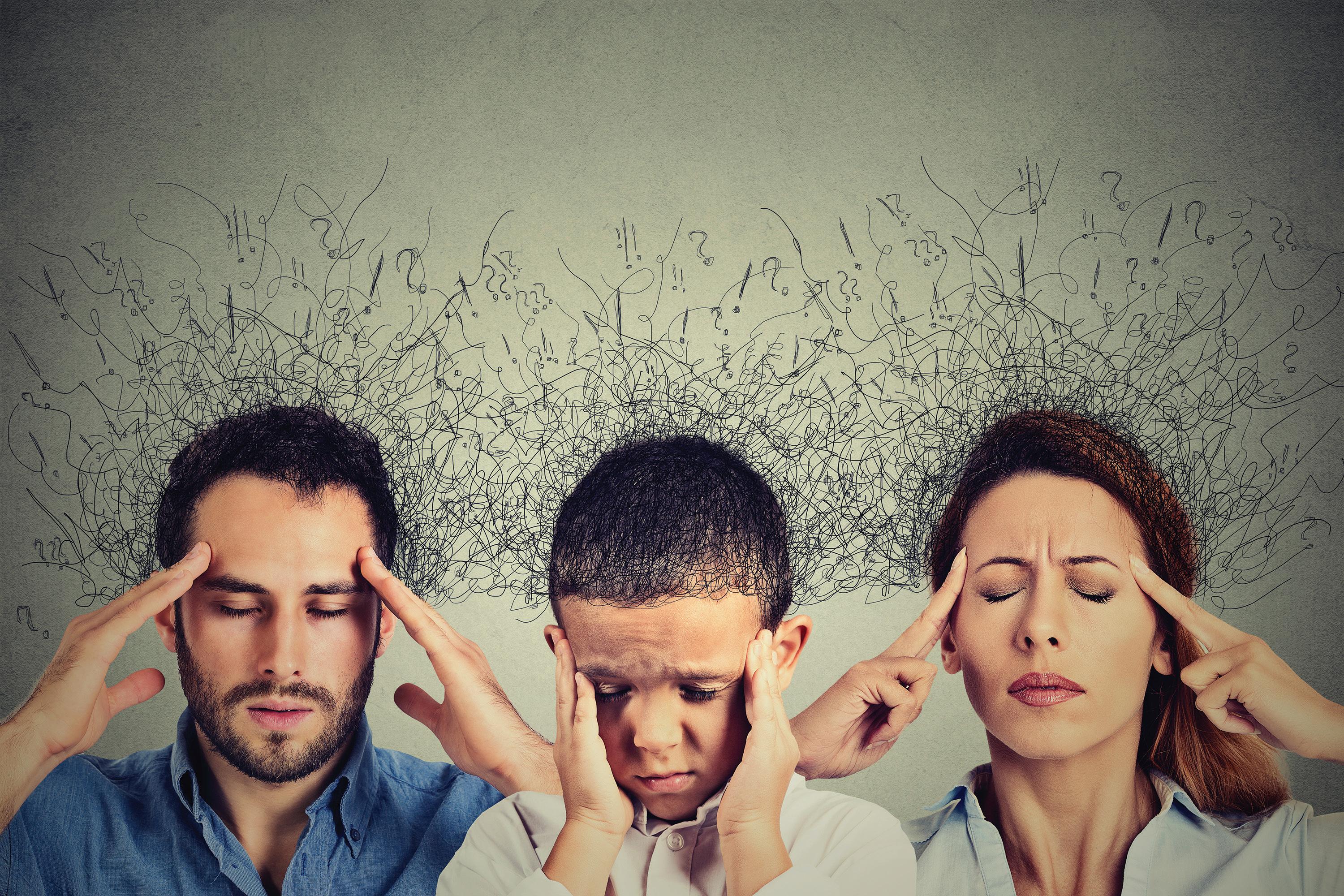
4 minute read
Understanding ADHD in Children & Adults
from May 2023
by VIP Magazine
Learn more about the challenges of ADHD in children and adults and how treatment can improve performance at school, work, and at home.
ADHD is arguably one of the most misunderstood disorders treated today. Along with other behavioral health conditions, people often mistake ADHD symptoms as a character fault when in reality, they are the manifestation of a neurodevelopmental disorder. This disorder causes dysregulation in multiple areas impacting performance in school, work, and relationships. Despite being frequently criticized as misbehaving, disorganized, unreliable, or even lazy, people with ADHD are in a constant battle with their brain chemistry to live and thrive in a neurotypical world.
Advertisement
Attention-deficit/hyperactivity disorder (ADHD) is characterized by a persistent pattern of inattention, hyperactivity, and impulsivity that interferes with daily functioning and is estimated to affect between 3 and 4% of the population. ADHD results from a lack of dopamine, a neurotransmitter and “feel-good” chemical that plays a crucial role in driving motivation, attention, and mood. Dopamine is also responsible for regulating movement, learning, and emotions. A deficiency of dopamine promotes dopamine-seeking behaviors that can be disruptive and unhelpful in daily living. While children and adults can experience some or all symptoms of ADHD, adults often present differently as they have learned to “mask” their disorder despite the associated problems.
Amanda Burnette is a physician serving patients at the HopeHealth Medical Plaza in Florence. She earned a Bachelor of Science in Psychology from the College of Charleston in Charleston, SC, and a Doctor of Medicine from the Medical University of South Carolina in Charleston, SC. She completed her residency at AnMed Health Family Medicine program in Anderson, SC. From Florence, Dr. Burnette is a member of the American Medical Association and the American Academy of Family Physicians.

ADHD in Children
ADHD is usually diagnosed in childhood, although some people may not receive a diagnosis until later in life. In children, ADHD symptoms typically begin before the age of 12 and can be classified as either predominantly inattentive, predominantly hyperactiveimpulsive, or combined.
Children with predominantly inattentive ADHD may have trouble paying attention, following instructions, and organizing tasks. They may also be forgetful, easily distracted, and prone to losing things.
According to Medical News Today, children with inattentive ADHD account for only 25% of all kids with ADHD who receive treatment in mental health centers.
This relatively small representation may be because children with inattentive ADHD are often less disruptive than children with hyperactive-impulsive ADHD. Due to this, their behavior may be easier to overlook.
Children with predominantly hyperactiveimpulsive ADHD may have trouble sitting still, waiting their turn, and managing impulses. They may also talk excessively, interrupt others, and engage in risky behavior. Motor coordination is also affected, causing children with ADHD to be more likely to have accidents and get injuries.
Children with combined ADHD exhibit symptoms of both inattention and hyperactivity-impulsivity.
ADHD often becomes evident due to problems in school as symptoms are disruptive in classroom settings where children are expected to sit at a desk for long stretches, concentrate to complete assignments, follow instructions, limit talking, and take turns with peers.
Forty to sixty percent of children with ADHD have ADHD-related problems in adulthood. ADHD sometimes shares symptoms with depression and anxiety disorders (poor concentration, restlessness), making it difficult to differentiate between disorders.
ADHD in Adults
While ADHD is commonly diagnosed in childhood, many people may not become aware of their disorder until later in life or continue to struggle with symptoms moving into adulthood. Adults with ADHD may experience difficulty with time management, organization, and prioritization, as well as completing tasks, staying focused, and remembering appointments. ADHD impairs the ability to regulate feeling, known as emotional dysregulation, resulting in mood swings, irritability, and impulsivity. Additionally, adults with ADHD may have trouble maintaining relationships and may struggle with employment and financial management.
Adults typically do not exhibit the hyperactivity that is commonly seen in children with ADHD but may still struggle to sit still for long periods, frequently repositioning or fidgeting. Heightened impulsivity encourages risk-taking, resulting in problems like higher rates of traffic violations and accidents. Adults with ADHD also have higher rates of workplace accidents.
Adults with ADHD are more likely than the general population to have comorbid mood disorders, anxiety disorders, and substance use disorders.
Diagnosing ADHD
Diagnosing ADHD involves a comprehensive evaluation of the individual’s symptoms, medical history, and current functioning. A diagnosis of ADHD requires the presence of persistent symptoms of inattention and/or hyperactivity-impulsivity that impair patient functioning and are not better explained by another condition.
In children, a diagnosis of ADHD may be made by a pediatrician or family physician, psychiatrist, or other behavioral health professional. In adults, a diagnosis of ADHD may be made by a primary care physician, psychiatrist, or psychologist. The diagnostic process typically involves a clinical interview with the individual and their family, as well as rating scales and behavioral assessments.
There does appear to be a genetic component to ADHD, as the risk of ADHD in parents and siblings of children with ADHD is two to eight times greater than that of the general population.
Treating ADHD
ADHD can be treated with a combination of medication and behavioral interventions. Medications can be used to treat ADHD by increasing the availability of certain neurotransmitters like dopamine in the brain, which can improve attention, impulse control, and hyperactivity.
Behavioral interventions for ADHD typically involve parent training and behavioral therapy. Parent training programs focus on teaching parents strategies for managing their child’s behavior and improving their communication and relationship with their child. Behavioral therapy may involve individual or group therapy, and typically focuses on teaching individuals with ADHD strategies for managing their symptoms, such as organizing tasks, improving time management, and reducing impulsivity.
If you suspect that you or your child may be living with ADHD, or need more help with ADHD management, contact a representative at HopeHealth to schedule an appointment with a primary care provider or behavioral health provider. HopeHealth offers integrated care services to help improve overall quality of life, including mental wellbeing.

